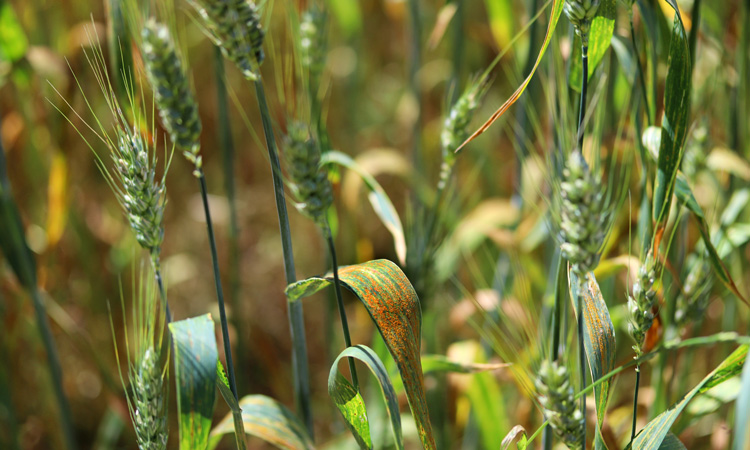Origin of deadly wheat pathogen discovered
- Like
- Digg
- Del
- Tumblr
- VKontakte
- Buffer
- Love This
- Odnoklassniki
- Meneame
- Blogger
- Amazon
- Yahoo Mail
- Gmail
- AOL
- Newsvine
- HackerNews
- Evernote
- MySpace
- Mail.ru
- Viadeo
- Line
- Comments
- Yummly
- SMS
- Viber
- Telegram
- Subscribe
- Skype
- Facebook Messenger
- Kakao
- LiveJournal
- Yammer
- Edgar
- Fintel
- Mix
- Instapaper
- Copy Link
Posted: 13 November 2019 | Sam Mehmet (New Food) | No comments yet
First identified in Africa two decades ago, the strain of the stem rust fungus, ‘Ug99,’ is said to threaten the global wheat supply due to its ability to attack more than 80 percent of all varieties planted across the world.


A team of researchers from the University of Minnesota, the Commonwealth Scientific and Industrial Research Organization (CSIRO), Australian National University, and University of the Free State in South Africa has uncovered the basis of the stem rust fungus strain Ug99’s virulence, which can attack more than 80 percent of all global wheat varieties, by examining the pathogen’s genome.
They determined that the pathogen can be traced to a rarely observed phenomenon where two different rust strains fuse together and exchange intact nuclei. This is said to create a hybrid strain with a wider host range than its original parents.
This investigation is allegedly the first to provide genome-wide data that this event, called “somatic hybridisation,” can generate new virulence combinations.
“Ug99 is an imminent threat to global food security due to its wide virulence and ability to readily spread across continents and oceans to infect distant wheat crops,” said study co-author Brian Steffenson, a plant pathology professor at the University of Minnesota College of Food Agricultural and Natural Resource Sciences (CFANS).
“We have known for a long time that the stem rust fungus is highly variable, but the molecular basis for this variation was not well understood. This study documents, at the genomic level, one important mechanism for how rust pathogens alter their virulence repertoire in nature,” he added.
“This information will be critical for deciphering the genetic basis and evolution of rust virulence on wheat and for monitoring the global movements of the pathogen,” said Eva Henningsen, a University of Minnesota graduate student in Plant Pathology.
By analysing the DNA sequences of the two individual nuclei present in Ug99, as well as the more established African stem rust strain called Pgt21-0, the researchers discovered that:
- One of the two nuclei in Ug99 was almost identical to one from Pgt21-0
- The acquisition of this nucleus in Ug99 occurred after somatic fusion with another rust strain, possibly Pgt21-0, creating a unique hybrid that is even more virulent and dangerous to wheat than its parental strains.
“As plant scientists, we are always looking for an advantage over stem rust in order to develop more durably resistant crops,” said Feng Li, a University of Minnesota Ph.D. student and joint first author on the study. “The data obtained from this study will provide us with new insights on how Ug99 emerged to threaten wheat across the world.”
Related topics
Food Safety, Pathogens, Research & development, Supply chain
Related organisations
Australian National University, the Commonwealth Scientific and Industrial Research Organization (CSIRO), University of Minnesota, University of the Free State in South Africa








